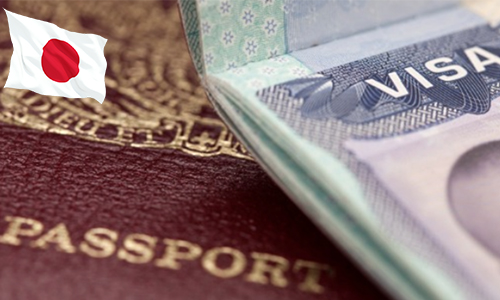Moroccan rug are renowned for their intricate designs, rich history, and cultural significance. These unique pieces are more than just floor coverings—they are artistic expressions of the weaver’s heritage and the region they come from. Whether you’re new to the world of Moroccan rugs or looking to add to your collection, this guide will help you navigate the process of finding the perfect rug.
-
Understanding the History and Tradition of Moroccan Rugs
Moroccan handmade rugs have been a part of the country’s cultural heritage for centuries. Traditionally, these rugs were crafted by Berber tribes, each with its own style and weaving techniques passed down through generations. The designs often reflect the weaver’s personal experiences, beliefs, and environment, with symbols representing fertility, protection, and nature.
The two primary types of Moroccan rugs are Beni Ourain and Azilal rugs. Beni Ourain rugs, originating from the Atlas Mountains, are made from wool and are known for their simple geometric designs and neutral tones. Azilal rugs, on the other hand, often feature bold colors and abstract patterns, making them a vibrant addition to any room.
-
Decoding the Different Types of Moroccan Rugs
Before purchasing a Moroccan rug, it’s essential to familiarize yourself with the different styles available:
- Beni Ourain Rugs: These rugs are among the most popular. They typically feature a creamy white background with simple black or brown geometric patterns. Their minimalistic and timeless design makes them versatile, perfect for modern interiors.
- Azilal Rugs: Bright and colorful, Azilal rugs are characterized by abstract designs with intricate details. They often combine bold hues like red, yellow, and blue, making them an excellent choice for those who want to add a pop of color to their space.
- Boucherouite Rugs: Created from recycled materials, Boucherouite rugs are a more recent addition to the Moroccan rug tradition. These vibrant rugs are made from leftover fabric and are known for their free-form designs and vivid colors.
- Kilims: Flat-woven, these rugs are lightweight and easy to maintain. They come in a range of patterns, from intricate geometric designs to simple stripes. Kilims are ideal for high-traffic areas and can even be used as wall hangings.
Each type of Moroccan rug has a distinct look and feel, so it’s important to consider how it will complement your home’s décor.
-
Choosing the Right Size
The size of the rug you choose depends on the room and the intended placement. Here’s how to select the right size:
- Living Room: Large Moroccan rugs can anchor the space, with furniture placed either partially or fully on the rug. A smaller rug can be used as a central piece to draw attention to a coffee table.
- Bedroom: In a bedroom, a Moroccan rug can be placed under the bed, extending beyond the edges to create a cozy and warm space. Alternatively, smaller rugs can be placed on either side of the bed.
- Dining Room: In dining areas, the rug should be large enough to accommodate the table and chairs, ensuring the chairs remain on the rug even when pulled out.
- Hallways and Entryways: For these areas, a runner or smaller Moroccan rug adds texture and warmth, creating a welcoming atmosphere.
-
Consider the Material
Moroccan handmade rugs are primarily made from wool, but newer designs also incorporate recycled materials like cotton or synthetic fibers. Wool rugs, such as the Beni Ourain variety, are soft, durable, and naturally resistant to dirt, making them ideal for homes with children or pets.
If you’re looking for something eco-friendly, consider a Boucherouite rug, crafted from upcycled materials. These rugs are not only sustainable but also colorful and eye-catching.
When purchasing a Moroccan rug, always inquire about the materials used. Authentic wool rugs tend to be more expensive but are worth the investment due to their durability and quality.
-
Decoding Rug Patterns and Symbols
The motifs found on Moroccan rugs are often symbolic, representing different aspects of life. Here’s a breakdown of some common symbols:
- Diamond shapes: Represent protection against evil spirits.
- Triangles: Often symbolize fertility or femininity.
- Zigzag lines: May signify water, the mountains, or natural landscapes.
- Crosses: Thought to represent a crossroads or a journey in life.
Understanding the meaning behind these patterns can help you select a rug that resonates with you personally, adding deeper significance to your purchase.
-
Assessing Quality
To ensure you’re purchasing an authentic Moroccan handmade rug, there are a few things to look out for:
- Check the Weave: Moroccan rugs are often hand-knotted, and the quality of the weaving will affect the rug’s longevity. Look at the back of the rug—if the knots are even and tight, the rug is likely well-made.
- Feel the Material: Authentic Moroccan rugs, especially those made from wool, will feel soft to the touch. If the rug feels stiff or scratchy, it may be made from lower-quality materials.
- Inspect for Imperfections: Handmade rugs are not always perfectly symmetrical, and minor irregularities in the pattern are a sign of authenticity. Machine-made rugs tend to be flawless but lack the unique charm of a handmade piece.
-
Budget Considerations
Moroccan rugs can range in price, depending on their size, material, and craftsmanship. Larger rugs and those made from high-quality wool will generally be more expensive. Azilal rugs and Boucherouite rugs, often made from cotton or recycled materials, tend to be more affordable options.
If you’re on a budget, consider buying a smaller rug or opting for a modern Moroccan-style rug that mimics traditional designs but at a lower price point. Always compare prices and ensure you’re getting a fair deal from a reputable seller.
-
Where to Buy Moroccan Handmade Rugs
When purchasing a Moroccan handmade rug, it’s important to buy from a trusted source. You can find Moroccan rugs at:
- Local Markets in Morocco: If you’re fortunate enough to visit Morocco, the souks of cities like Marrakech and Fez offer a wide range of handmade rugs. Bargaining is common, so be prepared to negotiate the price.
- Specialty Stores: Many stores around the world specialize in Moroccan rugs and can offer guidance on choosing the right one for your home.
- Online Retailers: There are numerous online platforms that sell authentic Moroccan rugs. When shopping online, make sure the seller provides detailed information about the rug’s origin, materials, and craftsmanship.
Conclusion
Choosing the perfect Moroccan handmade rugs requires a balance of understanding the various styles, patterns, and materials while also considering how the rug will fit into your home’s aesthetic. Whether you prefer the minimalistic appeal of a Beni Ourain or the vibrant designs of an Azilal rug, you’ll be investing in a unique piece of art that embodies Morocco’s rich cultural heritage. By considering your space, budget, and personal preferences, you can find a Moroccan rug that will enhance your living space and become a cherished part of your home.













